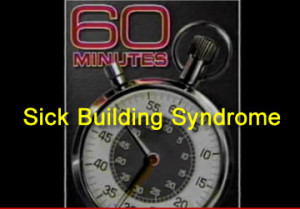 Sick Building Syndrome
Sick Building Syndrome
The term “sick building syndrome” (SBS) is used to describe situations in which building occupants experience acute health and comfort effects that appear to be linked to time spent in a building, but no specific illness or cause can be identified.
The complaints may be localized in a particular room or zone, or may be widespread throughout the building. In contrast, the term “building related illness” (BRI) is used when symptoms of diagnosable illness are identified and can be attributed directly to airborne building contaminants.
A World Health Organization Committee report suggested that up to 30 percent of new and remodeled buildings worldwide may be the subject of excessive complaints related to indoor air quality and sick building syndrome.
On occasion this condition is temporary, but some buildings have long-term problems. Frequently, problems result when a building is operated or maintained in a manner that is inconsistent with its original design or prescribed operating procedures, or a indoor water leak has taken place.
Indicators of Sick Building Syndrome include:
• Building occupants complain of symptoms associated with acute discomfort, e.g., headache; eye, nose, or throat irritation; dry
cough; dry or itchy skin; dizziness and nausea; difficulty in concentrating; fatigue; and sensitivity to odors.
• The cause of the symptoms is not known.
• Some complainants report relief soon after leaving the building, others continue to have continuing symptoms and illness
Indicators of Building Related Illness include:
• Building occupants complain of symptoms such as cough; chest tightness; fever, chills; and muscle aches.
• The symptoms can be clinically defined and have clearly identifiable causes.
• Complainants may require prolonged recovery times after leaving the building.
